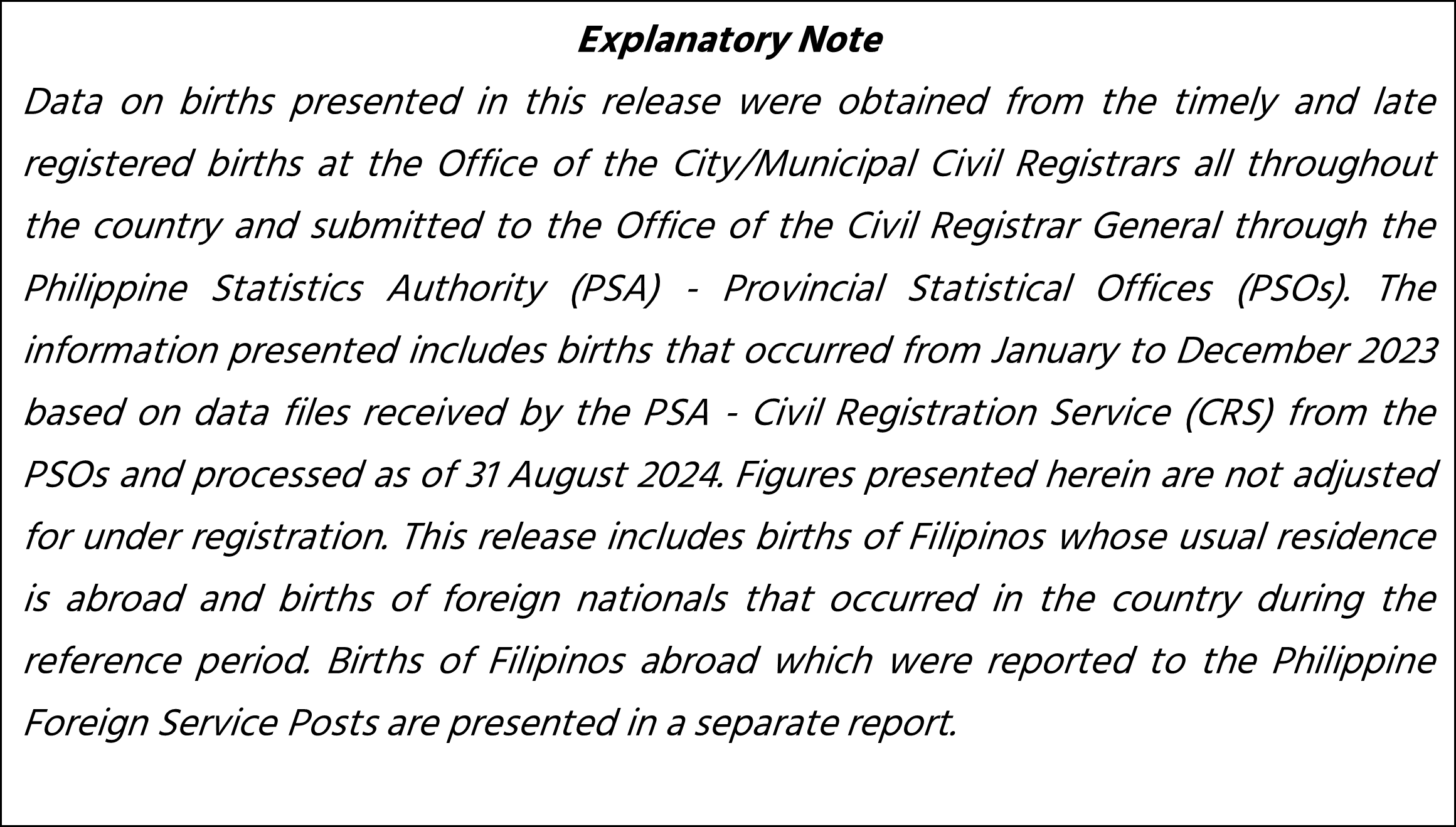
Sixteen births per thousand population
In 2023, Region X registered a total of 81,648 live births, corresponding to a crude birth rate (CBR) of 16, or 16 births per thousand population.
In the past nine years, registered live births decreased by of 9.0 percent from 89,682 in 2015 to 81,648 in 2023.
The highest rate of decline was noted in 2019-2020 with 10.7 percent. (Figure 1 and 1b).
Year 2021 had the least number of registered live births since 2015.
On the average, 224 babies were born daily, which translates to 9 babies born per hour.

More males were born than females
In 2023, more males (42,510 or 52.1% share) were born than females (39,138 or 47.9% share), resulting in a sex ratio at birth of 109 males per 100 females.

Highest occurrence of births by place of occurrence recorded in Bukidnon
Areas with relatively large population reported the highest number of live births by place of occurrence and by usual residence of mother. Region X recorded 81,648 live births by place of occurrence and 79,551 by usual residence in 2023. Bukidnon recorded the highest number of birth occurrences by place of occurrence with 32.9 percent share. This was followed by City of Cagayan de Oro with 21.8 percent and Misamis Occidental with 14.2 percent. The province of Bukidnon also recorded the highest number of births by usual residence with 34.5 percent share followed by Misamis Oriental with 18.8 percent share and City of Cagayan de Oro with 15.2 percent share. (Figure 3)
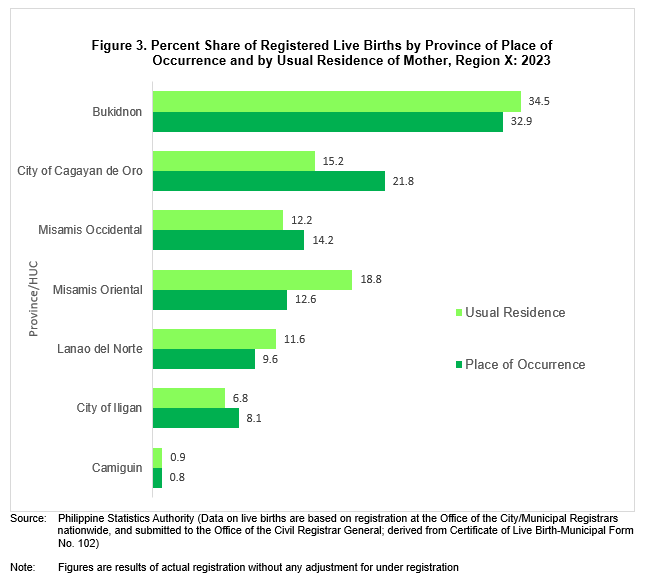
Most number of births registered in January
In 2023, most registered births occurred in January with 7,845 births, accounting for 9.6 percent of the total regionwide. It was followed by the months of September at 7,043 (8.6% share), and October at 6,974 (8.5% share). On the other hand, the month of June had the least number of births at 6,364 or 7.8 percent share. (Figure 4a and 4b)

In terms of daily averages, January recorded the highest number of births with an average of 262 births per day, or 11 births per hour. On the contrary, June had the lowest daily average with 212 births, equivalent to 9 births per hour.
Four provinces in the region attended by health professionals higher than 90.0 percent
The number of births by place of occurrence and by usual residence of mother showed a remarkable proportion of births attended by health professionals in the provinces of Region X. This is indicative of improving health services in terms of maternal and child health care. Four of the five provinces in the region had medically attended births higher than 90.0 percent. On the other hand, only 76.5% of the births that occurred in Lanao del Norte were attended by health professional while the rest were attended by traditional birth attendants—either hilot or unlicensed midwives, or other type of attendants.
(Figure 5)
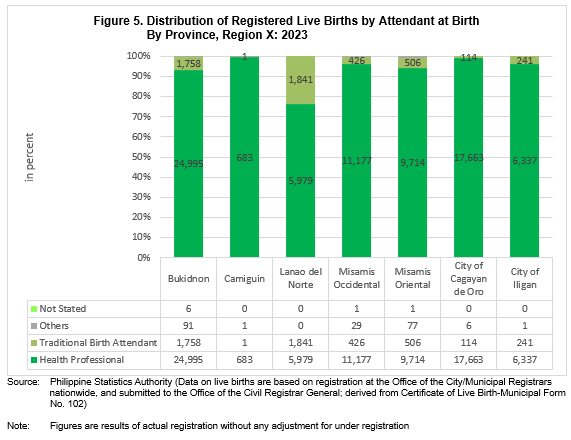
Nine in ten births delivered in health facilities
In 2023, 9 out of 10 births were delivered in a health facility (92.8%), which was either a hospital, birthing clinic, lying in centers, outpatient care center, specialized care center, and the like. Only 6.5 percent of total births were delivered at home and 0.8 percent were delivered in other locations. (Figure 6)
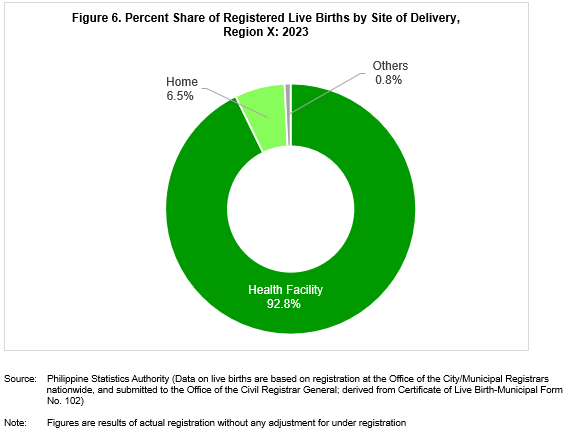
Majority of babies were born to mothers aged 25-29 years old
In 2023, majority of registered births by place of occurrence were born to mothers aged 25-29 years, with 21, 092 or 25.8%. This was followed to mothers aged 20-24 years old with 19, 162 or 23.5%, and aged 30-34 years old with 17,325 or 21.2%. (Figure 7)
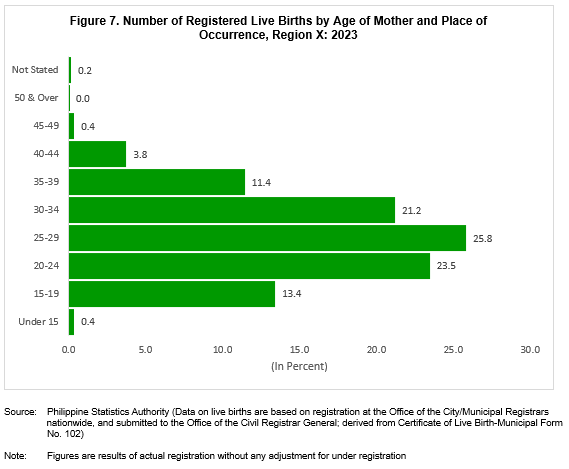
More than half of the number of babies were born to unwed mothers
More than half (46,841 births) of the total registered live births by usual residence of mother in 2023 were born out of wedlock. Non-marital male births recorded at 24,516 and female births at 22,325. While Legitimate male and female births posted at 16,953 and 15,727, respectively. (Figure 8)

(SGD.) JANITH C. AVES, DM
Regional Director

